Homosassa Waterfront!!! L@@K
December 2, 2015 by Alison Markham
Filed under Featured, Real Estate
Welcome to Homosassa Florida
June 5, 2013 by Alison Markham
Filed under Featured
 A quiet little fishing village found hidden along the Florida Gulf Coast, Homosassa is that and so much more. The commercial fishing has all but retired over time for various reasons. However, it’s old florida charm still remains and it is still a popular vacation and recreation area, thanks to the beautiful Homosassa River and it’s proximity to the Gulf of Mexico.
A quiet little fishing village found hidden along the Florida Gulf Coast, Homosassa is that and so much more. The commercial fishing has all but retired over time for various reasons. However, it’s old florida charm still remains and it is still a popular vacation and recreation area, thanks to the beautiful Homosassa River and it’s proximity to the Gulf of Mexico.
…more later.
Monkey Island
May 2, 2013 by Alison Markham
Filed under Featured
 Monkey Island sits in the middle of the Homosassa river and is inhabited year-round by a small family of monkeys. The island is owned by The Homosassa Riverside Resort. They care for the monkeys and feed them regularly. You can get an up-close look from a boat and take pictures or you can see Monkey Island from the resort grounds. You can also see the island from the public boat ramp next to MacRae’s but you’ll need binoculars to view the monkeys from there.
Monkey Island sits in the middle of the Homosassa river and is inhabited year-round by a small family of monkeys. The island is owned by The Homosassa Riverside Resort. They care for the monkeys and feed them regularly. You can get an up-close look from a boat and take pictures or you can see Monkey Island from the resort grounds. You can also see the island from the public boat ramp next to MacRae’s but you’ll need binoculars to view the monkeys from there.
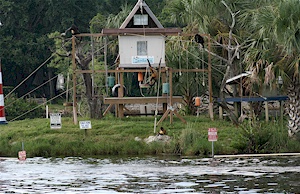 Story has it that G.A. (Furgy) Furgason, also known as “Mr. Homosassa” because of his planning and directing of much of the areas surroundings, worked 36 years with Bruce A. Norris of the Norris Cattle Company until his retirement in 1983. They negotiated deals to buy the land where the Yardarm Lounge, the Riverside Resort and the Riverside Crab House, the Wildlife Park, the Crow’s Nest, Sugarmill Woods, and Riverhaven Village now sit.
Story has it that G.A. (Furgy) Furgason, also known as “Mr. Homosassa” because of his planning and directing of much of the areas surroundings, worked 36 years with Bruce A. Norris of the Norris Cattle Company until his retirement in 1983. They negotiated deals to buy the land where the Yardarm Lounge, the Riverside Resort and the Riverside Crab House, the Wildlife Park, the Crow’s Nest, Sugarmill Woods, and Riverhaven Village now sit.
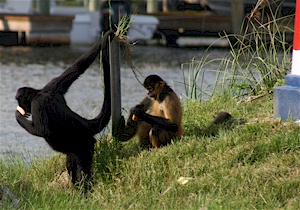 Mr. Furgason said he ran into the late Dr. John N. Hamlet in Rapid City and convinced the naturalist to come to Florida. Upon his arrival, Dr. Hamlet was hired by Weekie Wachee as a naturalist and subsequently was hired by Furgy. Dr. Hamlet had captured monkeys and brought them to America where they were used to perfect the polio vaccine.
Mr. Furgason said he ran into the late Dr. John N. Hamlet in Rapid City and convinced the naturalist to come to Florida. Upon his arrival, Dr. Hamlet was hired by Weekie Wachee as a naturalist and subsequently was hired by Furgy. Dr. Hamlet had captured monkeys and brought them to America where they were used to perfect the polio vaccine.
Monkey Island was just a pile of rocks in the 1960’s that took the bottoms right out of boats during high tide. Furgy went to Africa on Norris Cattle business leaving instructions for the dragline operator, working for him on
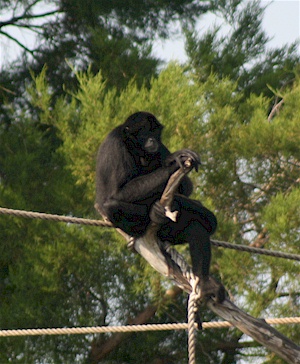 the Crow’s Nest, “pull some dirt around those rocks so the boaters can see it better”. When he got back to Homosassa, the dragline operator had piled so much dirt and rocks up that he had succeeded in building a barren island right outside the Yardarm.
the Crow’s Nest, “pull some dirt around those rocks so the boaters can see it better”. When he got back to Homosassa, the dragline operator had piled so much dirt and rocks up that he had succeeded in building a barren island right outside the Yardarm.
Having no idea what to do with this horrible eyesore, he decided to build a lighthouse on it. He then started thinking about the monkeys along the canal at the Attraction. There were some that were rather difficult, always escaping and getting into visitors cars, stealing candy and biting tourists. He said he had often thought of sending them to Alcatraz and decided the island would be perfect. He put three spider monkeys and two squirrel monkeys on the island with some huts and some trees.
The first island monkeys lasted 12 years before they began to die and were replaced with younger monkeys. The island turned out to be a big attraction for the visitors and became known as Monkey Island.
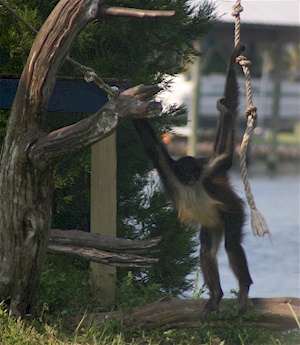 Palm trees were planted but the monkeys kept eating the palm hearts, which caused the trees to die. Cedars replaced them and prospered.
Palm trees were planted but the monkeys kept eating the palm hearts, which caused the trees to die. Cedars replaced them and prospered.
Today there are five spider monkeys on the island. There is Ralph, the alpha male, Sassy, the matriarch and Ebony, their offspring plus two of the newest female adoptions of Eve and Emily. The two squirrel monkeys, Tiny and Tim, died of old age in 2003. New houses, play toys and enhancement features are always being added for their amusement. Visitors to our river are a constant source of entertainment for the monkey family.
Even though the ownership of the property with island has changed over the years, the monkeys have always been under the care of the owners. The monkeys are fed twice a day from a menu designed specifically for them and consisting of green leafy vegetables, bananas, oranges, sweet potatoes, raw peanuts and monkey chow.
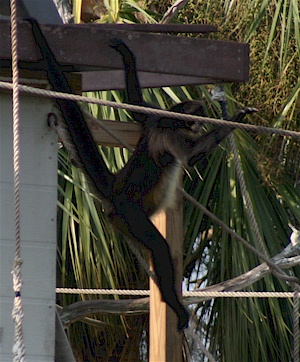 They remain on the island because they prefer not to swim and the river acts as a natual barrier. Today they still delight the Yardarm and hotel guests with their playful antics.
They remain on the island because they prefer not to swim and the river acts as a natual barrier. Today they still delight the Yardarm and hotel guests with their playful antics.
Homosassa Springs Wildlife Park
May 1, 2013 by Alison Markham
Filed under Featured
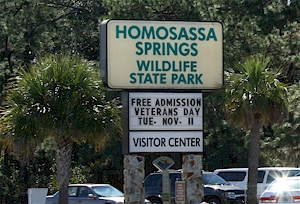 Homosassa is a Native American Creek word meaning “place of many pepper plants”. Before the white man came, this area was home to the Creek and Seminole Indians. Recent digs have uncovered all sorts of native artifacts including canoes. At that time this area was a low lying vast swamp spotted with small islands and many natural springs of crystal clear pure fresh water. Millions of
Homosassa is a Native American Creek word meaning “place of many pepper plants”. Before the white man came, this area was home to the Creek and Seminole Indians. Recent digs have uncovered all sorts of native artifacts including canoes. At that time this area was a low lying vast swamp spotted with small islands and many natural springs of crystal clear pure fresh water. Millions of
gallons of fresh water per hour pour out of these springs which creates the beautiful contributory creeks and rivers.
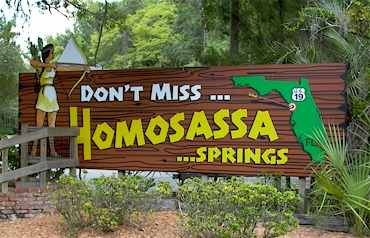
The Homosassa Springs Wildlife State Park began with one mans first impressions. In 1924 Mr. Bruce Hoover, of Chicago visited by railroad the head spring of the Homosassa River and said “this is the most beautiful river and springs in the world”. Afterwards he had a wooden bridge and two higher observatory decks built spanning the springs head, then dubbed the term still used today, he declared this place a true “wonder of the world” and a natural “fish bowl“. Nearby there was a small 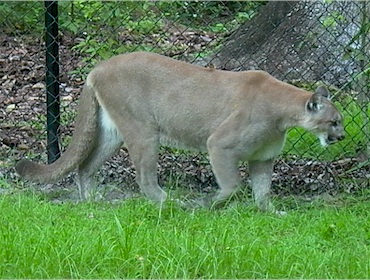 building that rented bathing suits to the people visiting on the train and people of brave heart would swim in the lagoon
building that rented bathing suits to the people visiting on the train and people of brave heart would swim in the lagoon
with the fish. At that time period there are no references to the manatees at all.
Today the Homosassa Springs Wildlife State Park has become far more than just a two hundred and ten acre wildlife preserve operated by the state of Florida with the help of an average of three hundred and fifty volunteers. It has been given the highest award for quality of care twice and has grown into one of the finest wildlife
rehabilitation centers in the nation. 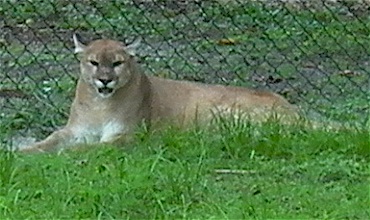 The Felburn wildlife care center, a cutting edge state-of-the-art care facility which was created with funds donated by the Felburn foundation and matched by the state was just recently opened. Already in full operation at the wildlife park is the manatee rehabilitation area for the care of injured and sick manatees. The manatee abuse hot line toll free number is 1-800-342-5367 or call the local marine patrol. More Later.
The Felburn wildlife care center, a cutting edge state-of-the-art care facility which was created with funds donated by the Felburn foundation and matched by the state was just recently opened. Already in full operation at the wildlife park is the manatee rehabilitation area for the care of injured and sick manatees. The manatee abuse hot line toll free number is 1-800-342-5367 or call the local marine patrol. More Later.
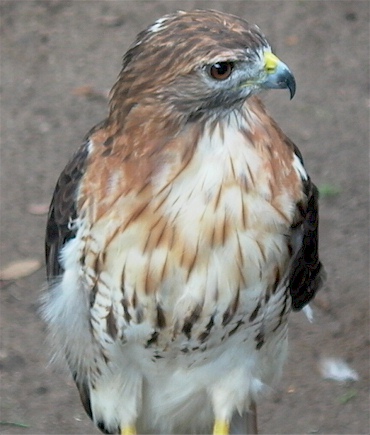
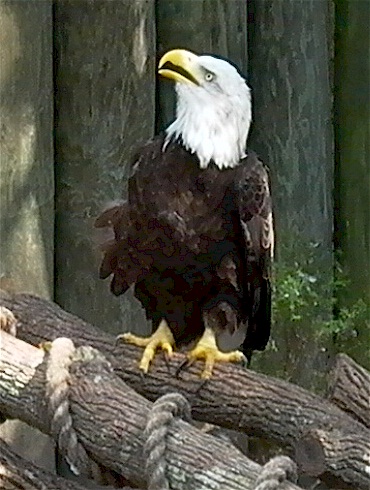
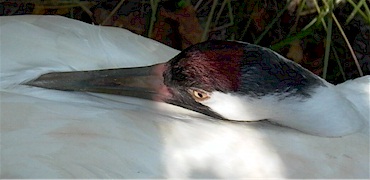
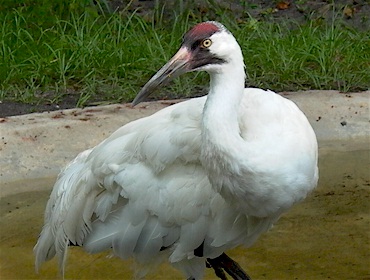
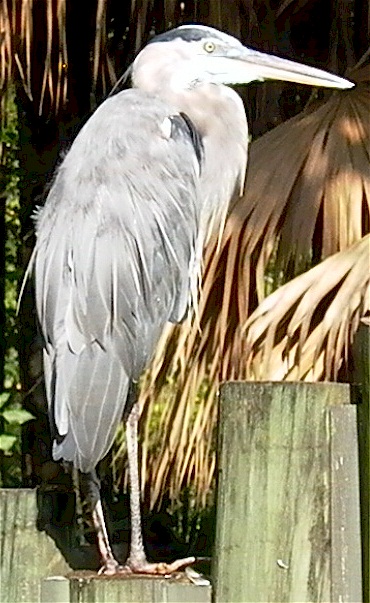
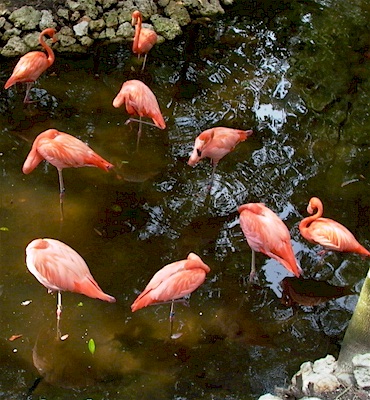
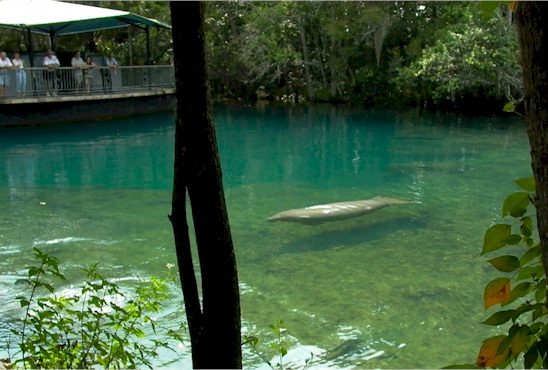
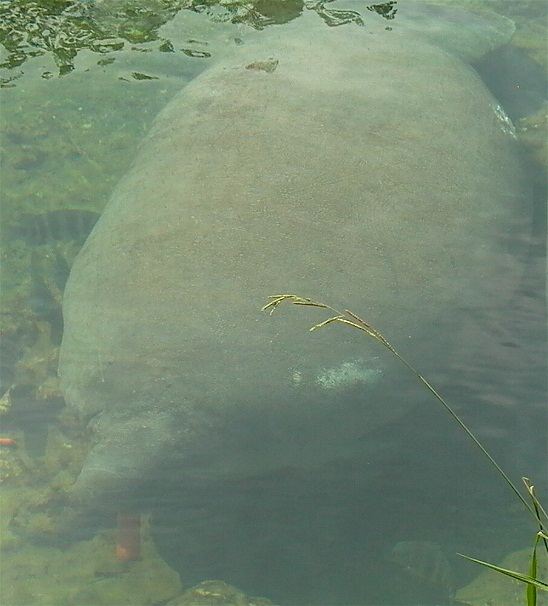
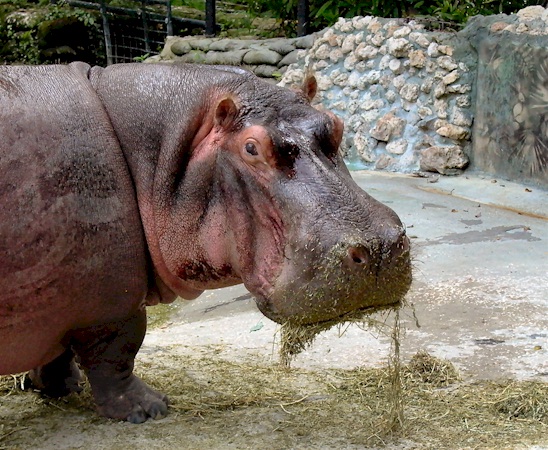
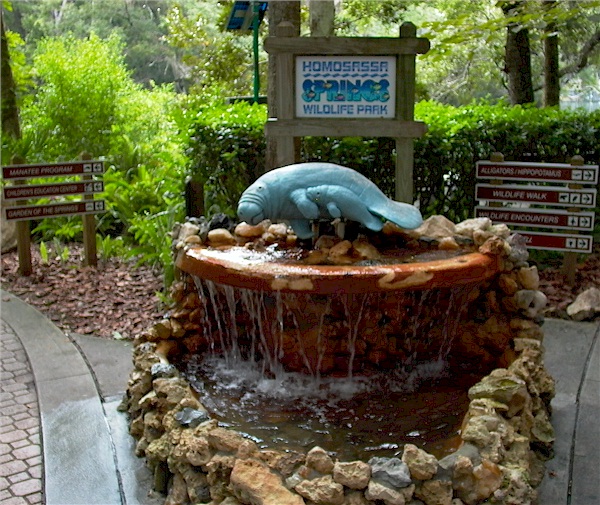
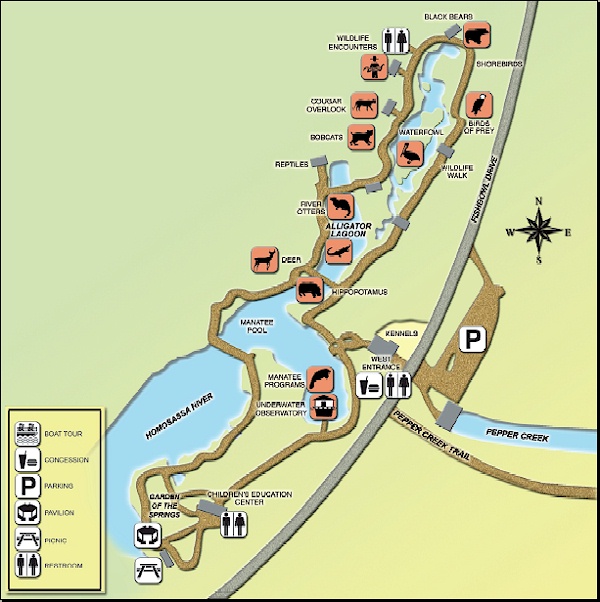
“Old Florida” on the Homosassa
October 3, 2008 by Alison Markham
Filed under Featured
 The Homosassa River is a picturesque beauty and an abundant resource.
The Homosassa River is a picturesque beauty and an abundant resource.
The springs that feed the river send millions of gallons of clear spring water out to the estuaries and the Gulf of Mexico every day.

